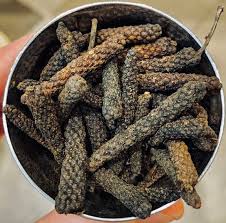
Indian spice before the Columbian exchange
Anyone who loves Italian food has surely noticed how ubiquitous tomatoes are. What would Italian food look like without tomatoes? My coworker from Cambridge, Daniel Kiecza, once went to an ancient Roman restaurant with his wife as part of their honeymoon in Italy. He described it as the single most awful food experience of his life. Not one dish was recognizable as Italian, and not one of them was tasty. Much of what makes the Italian food that we know comes from the New World. Even the core element of Italian cuisine - pasta - is imported. Of course, these types of discusisons of the origins of food often get messy; nearly every culture has taken inspiration, ingredients and sometimes whole dishes from other places in the world to claim as their own.
I was always fascinated about what people in India ate for spice before the Columbian exchange. My region - Andhra/Telangana - and Nagaland are famous for the chilis that we grow, and the heat of our cuisine. This isn’t to say that other cuisines in India aren’t also spicy, but many of them lean sweet - a typical Gujarati or Bengali thali will leave you feeling very different than an Andhra thali with its yogurt-marinated fried red chilies for fun.
So how did people make food full of heat and fun before chilis? Black pepper, white pepper and long pepper. Fun fact: my least favorite Indian dishes rely mostly on these flavors. Wild, right? Often for black pepper, we use the whole spice, and biting into one of those is surprising and unpleasant. Long pepper reminds me of medicine. White pepper is OK, but I just use it occasionally for eggs.
Of course all the other spices in Indian cooking remained - mustard, cumin, carraway, coriander, cardamom, clove, cinnamon, nutmeg, mace, anise/fennel, fenugreek. There’s quite an interesting article on the food and food habits of the Vijayanagara empire which goes into deeper detail about pre-Columbian exchange food in India as documented by Portuguese and Arab travelers. Makes for some delicious reading.